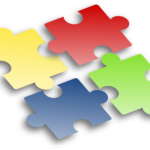Tummy time is physical activity for infants; it is an awake, prone position that is supervised and encouraged by an adult. Tummy time is especially important since the onset of the “back to sleep” campaign. Since infants are now placed in a supine position for sleep they need more awake time in a prone position. Read More
Category: Learn
Interactive Reading With Infants and Toddlers
Babies as young as 5 months old may show interest in books. “Interest” at this age means turning pages back and forth and putting the book in the mouth. Think of mouthing a book as a “pre-reading” skill! By the time your baby is about 9 months old they may be sitting in your lap Read More
Help Your Child Build Resilience
Resilience is the ability to “bounce back” despite hardship. We have all been through some degree of hardship these last few years. Not only have our “regular” lives continued on with all their related stressors, they’ve been accompanied by the discordant soundtrack of a pandemic. How can you nurture your child’s resilience? Have Hope There Read More
Hold and Reach
Encourage Infant Hand and Arm Use You make a difference in your baby’s development! Most babies are unable to reach for objects in the first 3 months of life. If you have participated in Parent Trust’s developmental screening program and have done a 4-month screening, you may remember an activity of holding a dangling toy Read More
Music for Sleep…Maybe Not
Parents truly appreciate the importance of a good night’s sleep. A recent experiment shows that listening to music before bed-contrary to much current advice-can actually reduce your quality of sleep. The study focused on the phenomenon of “earworms”–when a song or tune plays over and over again in a person’s mind. Although this typically happens Read More
Spatial Awareness
Spatial sense is a basic math skill which is also important in many other aspects of life like art and nature. Think of it as how we understand shape, size, position and direction. It’s how we understand, describe and interact with the physical world around us. Well before geometry class, children can recognize and identify Read More






